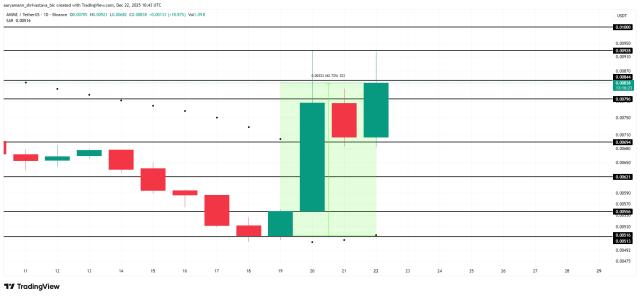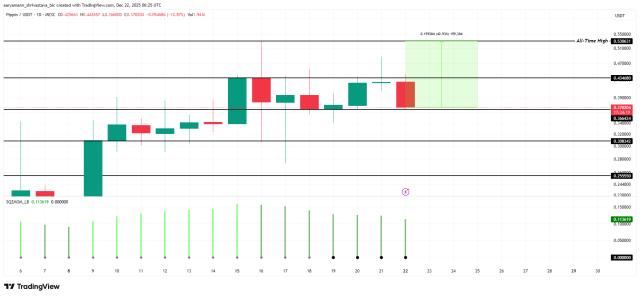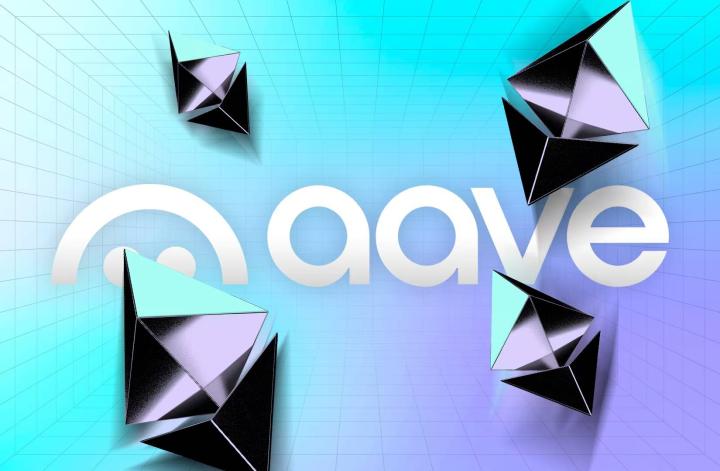Original title: Bitcoin Halving. The Four Year Cycle Is Dead
By Jasper De Maere, Head of Research, Outlier Ventures
Compiled by: 0xjs@ Jinse Finance
Four months after the Bitcoin halving, we have witnessed the worst post-halving price performance to date. In this article, we will explain why the halving no longer has a fundamental impact on the price of BTC and other digital assets. The first halving to have a fundamental impact dates back to 2016. As the digital asset market matures, it is time for founders and investors to get rid of the concept of a four-year cycle.
Key points:
The 2024 halving is the fifth period of Bitcoin halving . The BTC price performed the worst within 125 days after the halving. The price fell by -8% compared to the day of the halving , while the average increase in the previous periods was It is +22%.
We believe that the 2016 halving was the last time that the halving had a significant fundamental impact on BTC price action . Since then, the size of BTC block rewards for miners has become more volatile in the context of a maturing and increasingly diverse crypto market. negligible.
The strong performance of BTC and the cryptocurrency market after the 2020 halving is purely coincidental, as the 2020 halving occurred during a period of unprecedented capital injection around the world after the COVID-19 pandemic , with the U.S. money supply (M2) alone increasing by 25.3% that year.
Some people believe that the 4-year cycle driven by halving still holds true in 2024, but the approval of BTC ETF in January 2024 will drive demand in advance , causing BTC to rise strongly before halving. This statement is wrong. BTC ETF approval is demand-driven catalyst, while the halving is a supply-driven catalyst, so they are not mutually exclusive.
Bitcoin prices have had a significant impact on the broader market and therefore on founders’ ability to raise capital through equity, SAFTs , and private or public token sales. Given the liquidity that cryptocurrencies bring to venture capital, founders must Understand the top-down market drivers to better anticipate funding opportunities and predict their trajectory. In this article, we’ll unpack the concept of the four-year market cycle to lay the foundation for exploring the true drivers of the future of work. The truth about the four-year cycle does not mean that we are bearish on the overall market.
Let’s first look at the BTC price performance before and after the halving in the past few cycles. It is obvious that the 5th cycle (2024) is the worst performing period since the halving , 125 days after the halving. This is the only period in which the price of BTC fell on the day of halving.
Figure 1 : BTC price performance before and after halving in different cycles

Source: Outlier Ventures
So what effect does the halving have on price? In short, there are two main reasons.
Fundamentals: Bitcoin halving reduces new supply, creating scarcity, and when demand exceeds limited supply, prices may rise. This new dynamic also changes the economics of miners.
Psychological level: Bitcoin halvings enhance perceptions of scarcity, reinforce expectations of price surges based on historical patterns, and attract media attention, which can increase demand and push prices higher.
In this article, we argue that the fundamental driver behind BTC price action, the halving, has been overstated and has been irrelevant over the past two cycles . We will combine these numbers to demonstrate that the net effect of the halving is not significant enough to impact BTC price or The broader digital asset space has a significant impact.
Initial observations - daily BTC block incentives
If you learn one thing from this article, it’s this:
The strongest argument for the halving’s impact on the market is that, in addition to reducing BTC inflation, it also affects the economics of miners, leading to changes in their fund management.
So, let's consider the extreme case where all mining block rewards are immediately sold on the market. How great would the selling pressure be? Below, the total daily block rewards received by all miners (in USD) are divided by the market price. of total transaction volume (in USD) to assess the impact.
Until mid-2017, miners had an impact of more than 1% on the market. Today, if miners sold all of their BTC block rewards, they would only account for 0.17% of market volume. While this does not include BTC previously accumulated by miners, it suggests that , as block rewards decrease and the market matures, the impact of BTC block rewards has become insignificant compared to the entire market.
Figure 2 : Potential market impact if all miners sold their daily BTC block rewards

Source: Outlier Ventures
Review - Halving Impact
Before we go on, a quick recap. The Bitcoin halving is an event that occurs approximately every four years where the block reward for miners is cut in half . This reduces the rate at which new BTC are generated, thus reducing the amount of new supply entering the market. The total supply of BTC is capped at 21 million , and each halving will slow the pace of reaching this cap. The period between each halving is called a cycle , and historically, each halving has affected The price of Bitcoin, as supply decreases and scarcity increases. All is illustrated in Figure 3.
Figure 3 : Bitcoin halving dynamics, block rewards, total supply and cycle

Source: Outlier Ventures
Bitcoin halving performance
Starting with what matters most to many of us, the impact on price performance, we find that the performance after the 2024 halving is the worst since the inception of BTC . As of today (September 2, 2024), BTC is trading at The price is about 8% lower than the price of $63,800 on April 20, 2024, the day of the halving.
Figure 4 : BTC price performance after each halving

Source: Outlier Ventures
“ What will happen before the 2024 halving? ” Indeed, we have experienced an unusually strong trend before the halving. Looking back at the performance 200 days before the 2024 halving, we find that BTC has increased by almost 2.5 times. This is almost the same as the 2nd If the market remains flat for the past two cycles , when BTC accounted for 99% of the total market value of digital assets, the halving still makes sense.
Figure 5 : BTC price performance 200 days before each halving

Source: Outlier Ventures
That being said, it’s also important to remember what happened during that time. In early 2024, we received approval for the BTC ETF, which has seen a net inflow of 299,000 BTC since January 11, 2024, significantly boosting the BTC ETF. The price is going up. So let’s be honest. The increase is not coming from the anticipation of the halving .
Figure 6 shows BTC performance between BTC ETF approval and halving. The approval of the BTC ETF in January 2024 increased demand for BTC, causing the 100-day gain in the 5th cycle to exceed the average cycle gain by +17%.
Figure 6 : BTC price performance 200 days before each halving

Source: Outlier Ventures , Google
Figure 7 shows the performance of BTC ETF after approval and 100 days after BTC halving. Obviously, the approval of ETF has a more significant impact on price trend than halving , which can be seen from the 29% difference between the 100-day performance. out.
Figure 7 : BTC performance and ETF catalysts 100 days after halving

Source: Outlier Ventures
“ Thus, the BTC ETF is driving demand and price action ahead of time that we would normally see around the halving!”
This is a weak argument to defend the 4 year cycle. The fact is that both catalysts are separate and independent of each other. ETFs are a demand driven catalyst while the halving is considered a supply driven catalyst. They Not mutually exclusive, if the halving remains significant, we should see significant price action on the back of this dual catalyst.
2016 was the last year
I believe 2016 and the 3rd cycle were the last times that the halving had a truly significant impact on the market. As discussed in Figure 2, the following chart illustrates the impact on the market if all miners sold on the day they received their block reward. As you can see, around mid-2017, this ratio fell below 1%, and today it’s barely above 0.20%, suggesting that the halving had minimal impact.
Figure 8 : Possible impact on the market if all miners sold their daily BTC block rewards

Source: Outlier Ventures
To understand the declining importance of the impact of miners’ financial decisions, let’s take a closer look at the different variables at play.
variable:
Total daily BTC block rewards – decreasing every cycle (↓)
Daily BTC volume – rising as the market matures (↑)
→ Over time, block rewards will decline and the market will mature, reducing the relevance of miner influence.
Figure 9 shows the BTC transaction volume and the BTC block rewards accumulated by miners. The sharp rise in transaction volume is the real reason why the correlation of miners’ block rewards has become insignificant.
Figure 9 : Daily BTC Miner Rewards and Daily Transaction Volume

Source: Outlier Ventures
For those who were there at the time, it’s clear what drove the growth in transaction volume during that period. To recap: After Ethereum launched in 2015 and unlocked smart contract functionality, the ICO boom ensued, leading to the Ethereum platform’s Many new tokens were created on the blockchain. The surge in new token issuance led to a decline in BTC’s dominance. The influx of exciting new assets (i) boosted trading volume in all areas of the digital asset market, including BTC; (ii) Incentivizing exchanges to mature faster allows them to more easily attract users and handle larger trading volumes.
Figure 10 : New ETH Token Issuance and BTC Dominance in Cycle 3

Source: Outlier Ventures
So…what about 2020?
A lot of things happened in the third cycle, which logically reduced the impact of mining fund management and, in turn, the impact of the halving as a catalyst for BTC. What about 2020? That time BTC was within a year after the halving . It has risen by about 6.6 times. This is not due to the halving, but to the unprecedented amount of money issued in response to Covid-19.
While the halving is not a fundamental factor, it may have influenced BTC’s price action from a psychological perspective. As BTC makes headlines around the halving, it provides a place for people to invest their excess capital at a time when they have few other spending options. Target.
Figure 11 shows the real reason for the rally. Just a few months before the May 2020 halving, the US money supply (M2) surged at a rate unprecedented in modern Western history , triggering a rally in sectors including real estate, stocks, private equity, and Speculation and inflation across various asset classes, including digital assets.
Figure 11 : US money supply (M2) and BTC price before and after the 2020 halving

Source: Outlier Ventures , Federal Reserve Bank
In addition to the inflow into BTC, it is important to recognize that the money printing activity occurred after the DeFi spring, which then developed into the DeFi summer. Many investors were attracted by the attractive yield opportunities on the chain and put their funds into cryptocurrencies and utility Tokens are used to capture this value. Since all digital assets are strongly correlated with each other, BTC naturally benefits from this.
Figure 12 : US Money Supply ( M2 ) and DeFi TVL

Source: Outlier Ventures , DeFiLama
Just after the halving, a combination of factors driven by global helicopter money policies triggered the largest cryptocurrency rally to date, making the change in block rewards seem to have a fundamental impact on price movements.
Remaining Miner Supply
“ What about the remaining BTC supply held by miners in vaults? This supply was accumulated in previous periods when hashrate was lower and block rewards were higher. ”
Figure 13 examines the miner supply ratio, which is the total amount of BTC held by miners divided by the total BTC supply, effectively showing how much supply miners control. The impact of miners’ treasury decisions on BTC prices is largely due to their The result of accumulated block rewards in the early periods.
As shown in the chart, the supply ratio of miners has been steadily decreasing and is currently around 9.2%. Recently, there has been an increase in over-the-counter activity of miners selling BTC, possibly to avoid having too much impact on the market price. This could be due to lower block rewards, higher hardware and energy input costs, and the fact that BTC prices haven’t risen significantly — forcing miners to sell their BTC faster to remain profitable.
We understand the impact of halving on the profitability of the mining industry, and they need to adjust their fund management to maintain profitability. However, the long-term direction of development is clear. The impact of halving on the price of Bitcoin will only decrease over time. .
Figure 13 : Miner supply ratio and month-on-month change rate

Source: Outlier Ventures , CryptoQuant
in conclusion
While the halving may have some psychological impact, reminding holders to pay attention to their dusty BTC wallets, it is clear that its fundamental impact has become irrelevant.
The last time a halving had a meaningful impact was in 2016. In 2020, it was not the halving that triggered the bull run, but the response to COVID-19 and the subsequent money printing.
For founders and investors trying to time the market, it’s time to focus on more important macroeconomic drivers rather than relying on four-year cycles .
With this in mind, we will explore the true macro drivers behind market cycles in future token trendlines.







